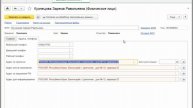094-Working with Relations in Python Code-opendir.cloud. #pythondjango #education #programmer
**Python Django - The Practical Guide**
**Lecture 94: Working with Relations in Python Code**
**Welcome back to the Python Django tutorial series!**
In this lecture, we will be working with relations in Python code. Relations are a fundamental part of Django, and they allow you to connect different models together.
**What are relations?**
Relations are a way of connecting different models together. For example, you might have a model for a `Post` and a model for a `User`. You could then create a relation between these two models to indicate that a `Post` can be written by a `User`.
**Types of relations**
There are many different types of relations in Django. The most common types are:
* **One-to-one:** This means that one instance of one model can be related to at most one instance of another model.
* **One-to-many:** This means that one instance of one model can be related to zero or more instances of another model.
* **Many-to-many:** This means that zero or more instances of one model can be related to zero or more instances of another model.
**Creating relations**
Relations are created using the `ForeignKey` field in Django models. For example, the following code creates a relation between the `Post` and `User` models:
```python
from django.db import models
class Post(models.Model):
title = models.CharField(max_length=255)
body = models.TextField()
author = models.ForeignKey('User', on_delete=models.CASCADE)
class User(models.Model):
username = models.CharField(max_length=255)
email = models.EmailField()
```
This code creates a `ForeignKey` field called `author` on the `Post` model. This field references the `User` model. This means that a `Post` can be written by a `User`.
**Accessing related objects**
Once you have created a relation, you can access related objects using the `related_name` attribute of the `ForeignKey` field. For example, the following code retrieves all of the posts written by a particular user:
```python
user = User.objects.get(username='johndoe')
posts = user.post_set.all()
```
This code first retrieves the `User` object with the username `johndoe`. Then, it retrieves all of the posts that are related to this user using the `post_set` attribute of the `User` object.
**Deleting related objects**
When you delete an object that has related objects, Django will automatically delete the related objects as well. For example, if you delete a `User` object, all of the posts written by that user will also be deleted.
**Conclusion**
Relations are a powerful tool for connecting different models together. They allow you to create complex data models that are easy to work with.
**Please do follow us if you are interested in learning more about Django.**
**Thank you for watching!**
Видео 094-Working with Relations in Python Code-opendir.cloud. #pythondjango #education #programmer автора MySQL Библиотеки
Видео 094-Working with Relations in Python Code-opendir.cloud. #pythondjango #education #programmer автора MySQL Библиотеки
Информация
8 декабря 2023 г. 7:27:05
00:06:29
Похожие видео






















